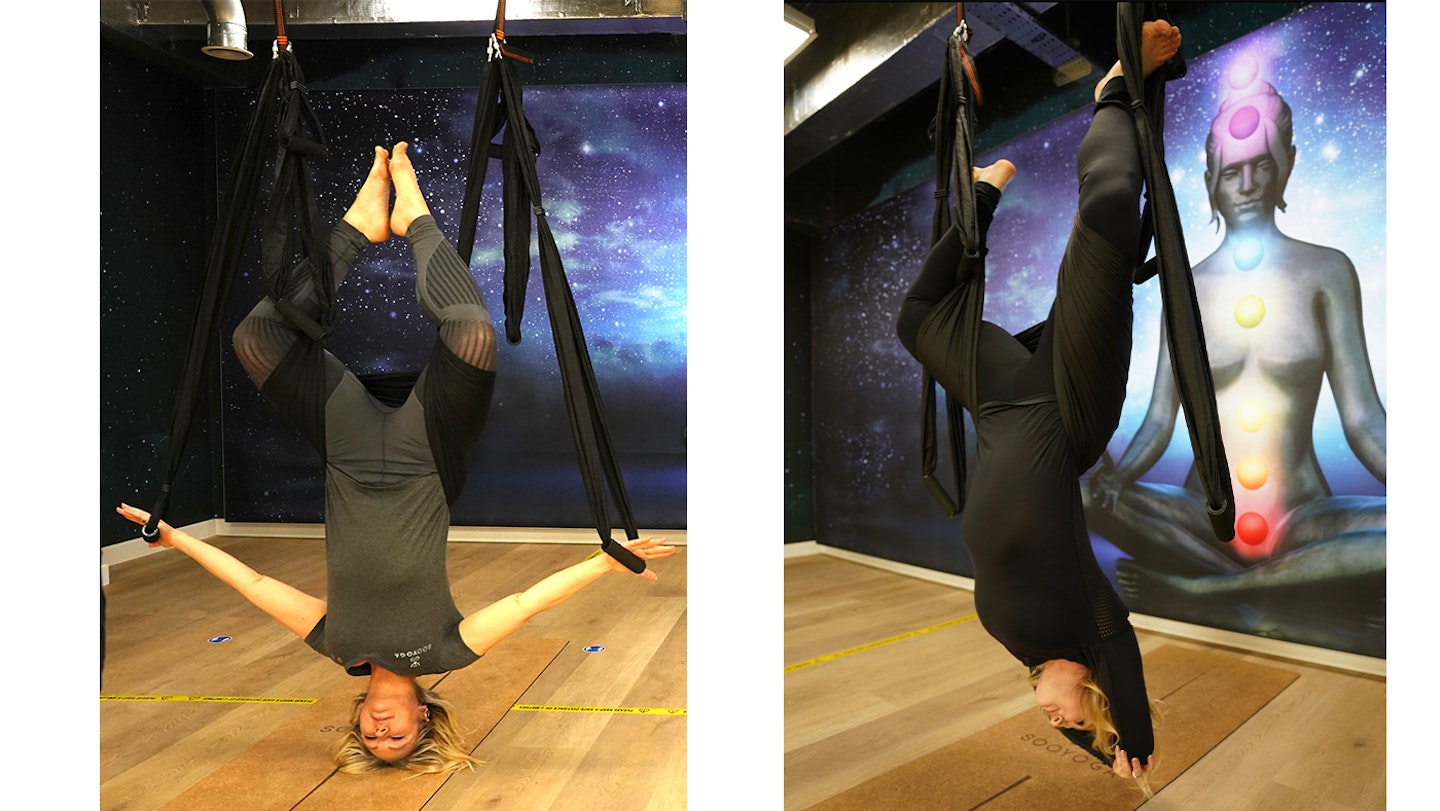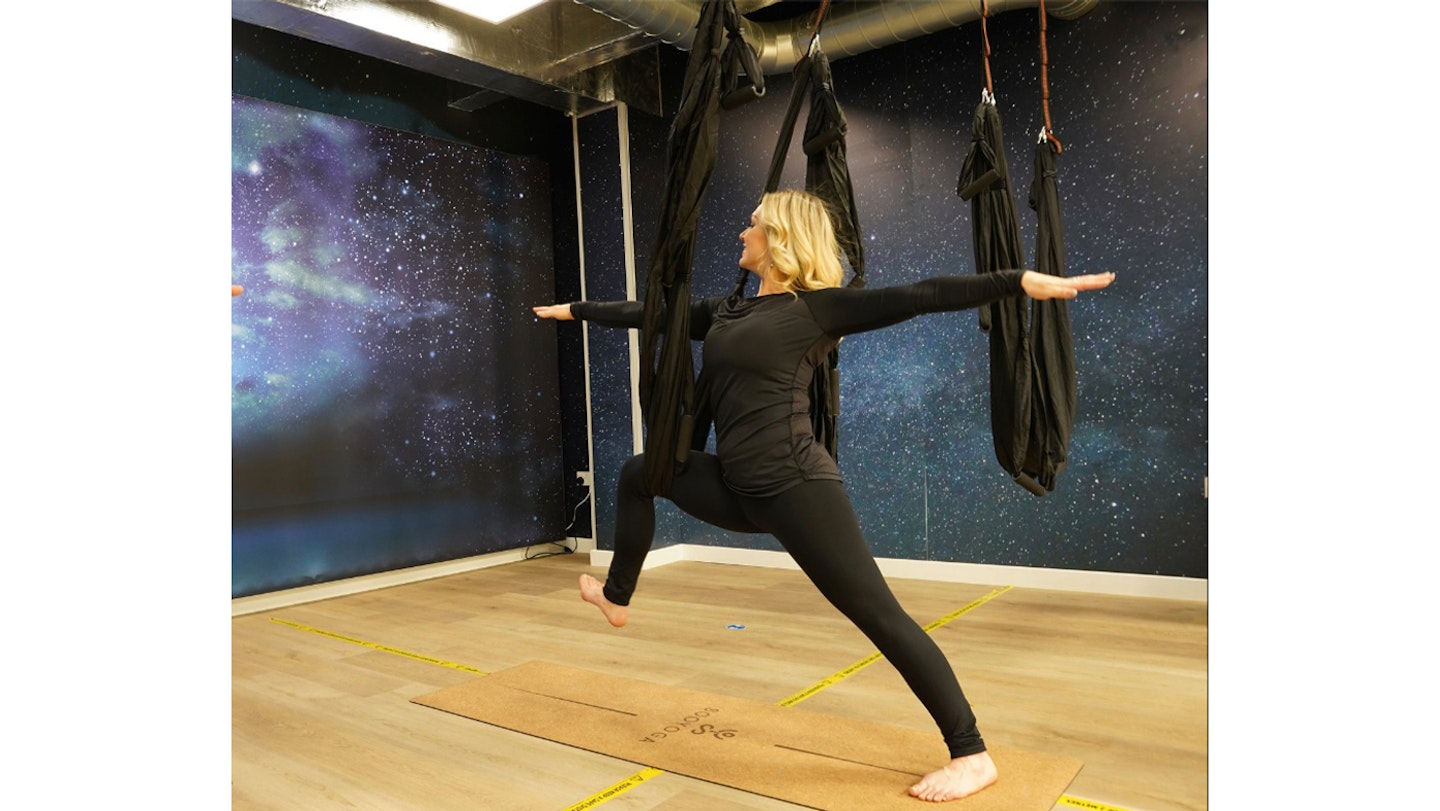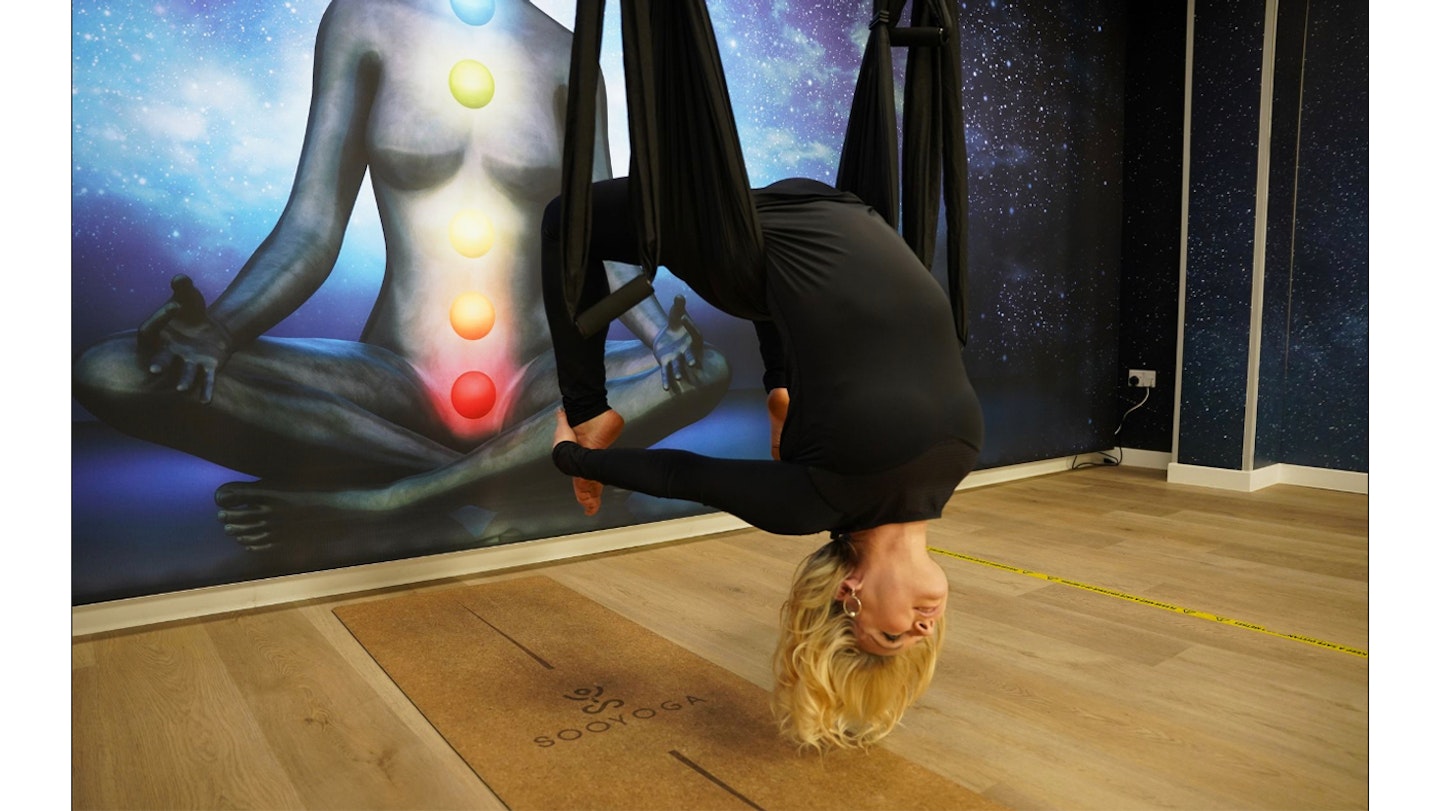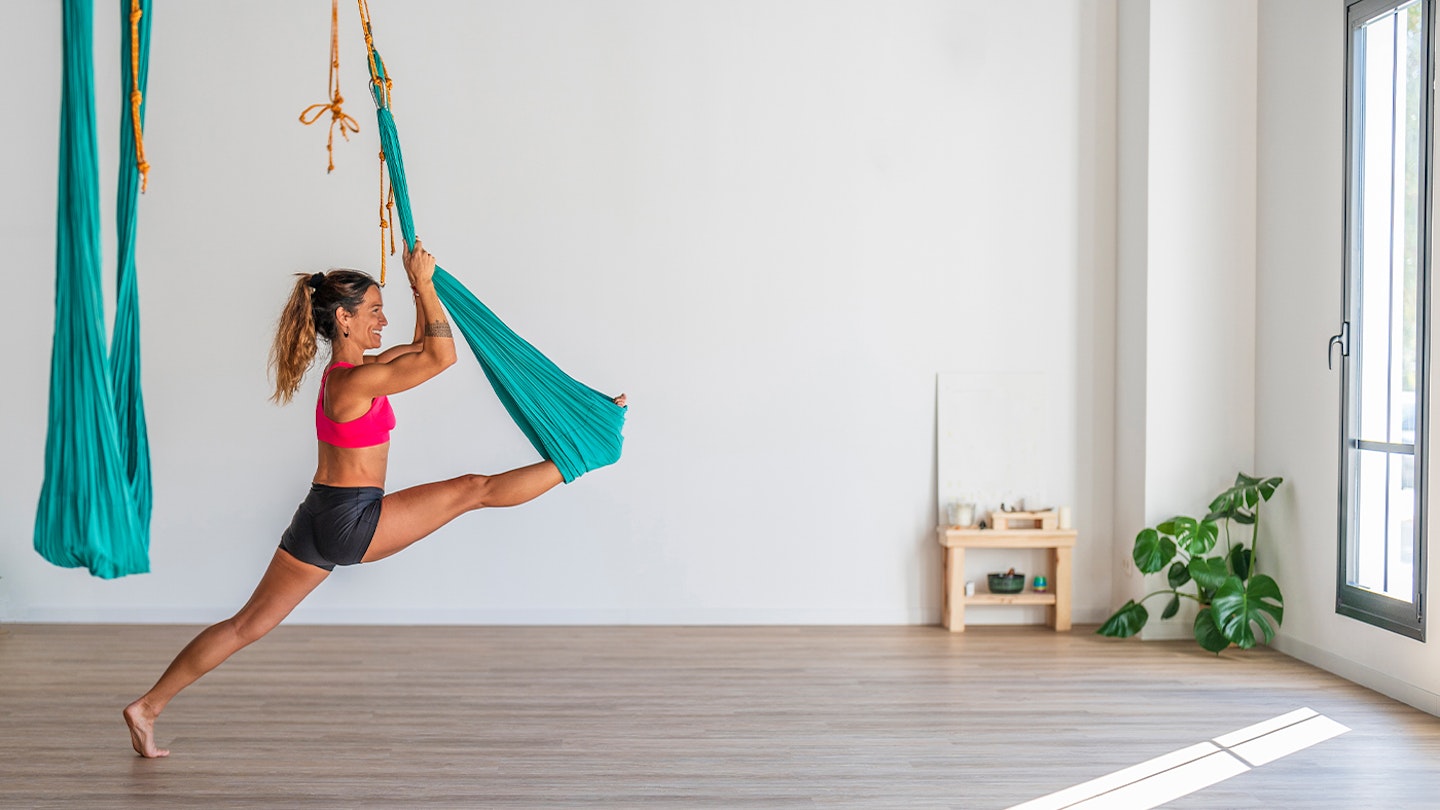Aerial yoga is a form of exercise you may have not heard of before. This form of yoga means swapping your eco-yoga mat for a sling or hammock and generally isn't for those who arebeginners to yoga. You then pose up in the air rather than on the ground, and is generally a little different to what you might have learned from your favourite Yoga app.
To help you learn about aerial yoga, we've rounded up the benefits, ways to get started, plus the top positions to try with expert tips and advice from Kristina Rihanoff. You may recognise Kristina from being a professional dancer and choreographer on Strictly Come Dancing, but she's also a certified yoga instructor at Soo Yoga.
What is aerial yoga?
The concept of “suspension“ in yoga is not new to experienced yogis, with many suspension props having been used in practices by famous yoga gurus dating back 100 years.
Most notably, it can be traced back to B.K.S Lyengar who developed a style of yoga that used props to focus on structural alignment of the body. He was well known in the 1970s for ‘yoga kurunta’ or ‘yoga puppetry’ that used ropes attached to the wall to support and suspend inversion poses. Lyengar ‘rope wall’ yoga is still loved and practiced today internationally, and is very similar to the aerial yoga we know today.
In 2001, Antonio Cardenas, a physical therapist in the US, developed a device similar to the one that is used today for aerial yoga or “Yoga Trapeze” and also dubbed the “Yoga Swing”. The most important thing is that the use of the suspended slings allow the execution of movements that help with spinal decompression, and improve flexibility and natural health of muscles and joints.
The constant suspension and swinging makes the body engage more muscles than traditional exercises performed on the ground. Yoga slings can be used at any age to bring more fun and play into practice. From yoga beginner to practitioner, using the hammock as a tool to modify or intensify alignment in yoga poses provides a variety of experiences for the user. It makes the body feel lighter so it can be lifted out of weight-bearing tension, allowing for more freedom of movement in every posture. It can be used to increase flexibility and strength for more challenging poses.
What are the benefits?
There are many reported benefits to practicing aerial yoga at any age, especially for those with back troubles. While there are many different kinds of positions to try, many find that upside down positions (also known as inversion therapy) are best for relieving symptoms.
Benefits of aerial yoga:
· Instant traction on the spine (within two to three minutes)
· Relief of back pain and possibly sciatica
· Core strength development – this is a great benefit of yoga for runners
· Deeper backbends and more open shoulders to help correct posture
· Functional upper body and full body strength development
What inversion therapy can do:
· Increase range of motion, particularly in flexion and extension
· Reduce herniated disk pain for injuries that are slight to mild (stage 1)
· Add 1-2 mm of space between L4/L5 and L5/S1 vertebrae
· Alleviate lordosis
· Reduce or calm activity in spinal muscles (measured in EMG (Electromyography)
Who should not do inversion therapy?
· Pregnant women
· People with stage 2+ herniated discs
· People with cardiovascular disease
· People with hypertension
· People with glaucoma
Best aerial yoga positions to try
Traction Jackson

Flying angel

Suspended warrior

Full wheel

How to do aerial yoga at home
Depending on your sling size you need a strong beam or metal rod across your ceiling to attach the sling to and make sure you have at least a one meter gap from the bottom of the sling to the floor. The reason being is that when you're in an upside down pose “asanas”, you need to make sure that you can safely hang upside down without hitting your head on the floor.
Normally when you buy a sling, you will have an installation guidance with all of the health and safety rules attached. As a teacher, I would strongly recommend to do at least one class led by a qualified teacher in a private lesson before you start practising on your own at home. While it is a very fun fitness yoga style, you should be guided by the professional to get into your inversions.
Aerial yoga near me
If doing it at home isn't feasible or you want a good practise before trying it yourself, there are plenty of aerial yoga classes in the UK for you to join.
A simple Google search can help you find a local class near you. Some of the top classes in the UK include:
London: Flying fantastic
Northamptonshire: Soo Yoga or Gravity Yoga
Birmingham: 1st Position Fitness
Meet the expert
Besides her passion for dancing, Kristina has been a yoga devotee for nearly 20 years and credits her regular yoga exercises during her professional and TV dance career which kept her away from injuries and provided mental focus.
In 2016, Kristina became a certified yoga instructor in Hot Yoga; Hatha; Vinyasa; Pre/Postnatal yoga; Children and Family yoga; Chair yoga for mobility issues; and Meditation. In June 2019, she opened an award winning Soo Yoga Wellbeing Centre in Northampton.
Kristina holds “experienced yoga teacher” status with Yoga alliance professionals in the UK and delivers workshops and training at her studios. For more information visit sooyoga.com.
